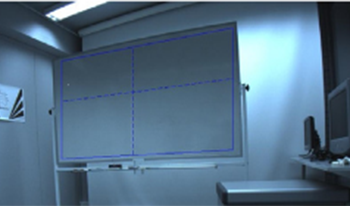References
1ReinhardE.WardG.PattanaikS.DebevecP.2005High Dynamic Range Imaging: Acquisition, Display, and Image-Based LightingThe Morgan Kaufmann Series in Computer GraphicsMorgan Kaufmann Publishers Inc.San Francisco, CA, USA
2BanterleF.ArtusiA.DebattistaK.ChalmersA.Advanced High Dynamic Range Imaging: Theory and Practice20111st ed.A. K. Peters, Ltd.Natick, MA, USA
3AbebeM. A.BoothA.KervecJ.PouliT.LarabiM.-C.2018Towards an automatic correction of over-exposure in photographs: Application to tone-mappingComputer Vision and Image UnderstandingVol. 1683203–20Elsevier B.V.
4FairchildM.Color Appearance ModelsThe Wiley-IS&T Series in Imaging Science and Technology2005WileyChichester
5SharmaG.Digital Color Imaging Handbook2002CRC Press, Inc.Boca Raton, FL, USA
6
7Huib de RidderE. A. F.BlommaertF. J.1995Naturalness and image quality: chroma and hue variation in color images of natural scenesProc. SPIE241124112411-112411–2411-11
8LuH.KowalkiewiczM.2012Text segmentation in unconstrained hand-drawings in whiteboard photosInt’l. Conf. on Digital Image Computing Techniques and Applications (DICTA), Fremantle, WA, Australia161–6IEEEPiscataway, NJ
9PlotzT.ThurauC.FinkG. A.2008Camera-based whiteboard reading: New approaches to a challenging taskInt’l. Conf. on Frontiers in Handwriting Recognition, Montreal, Canada385390385–90
10WieneckeM.FinkG. A.SagererG.2003Towards automatic video-based whiteboard reading2003 Proc. Seventh Int’l. Conf. on Document Analysis and Recognition, Edinburgh, UKVol. 1879187–91IEEEPiscataway, NJ
11VajdaS.RothackerL.FinkG. A.2012A Method for Camera-Based Interactive Whiteboard Reading112125112–25SpringerBerlin, Heidelberg
12ZhangZ.HeL.-W.2007Whiteboard scanning and image enhancementDigit. Signal Process.17414432414–3210.1016/j.dsp.2006.05.006
13GormishM.ErolB.Van OlstD. G.LiT.MariottiA.2011Whiteboard sharing: capture, process, and print or emailProc. SPIE787978790D
14DicksonP. E.AdrionW. R.HansonA. R.2008Whiteboard content extraction and analysis for the classroom environment2008 Tenth IEEE Int’l. Symposium on Multimedia702707702–7IEEEPiscataway, NJ
15DicksonP. E.KondratC.AdrionW. R.RichardsT. D.SzetoR. B.2016Improved whiteboard processing for lecture captureIEEE Int’l. Symposium on Multimedia (ISM)649654649–54IEEEPiscataway, NJ
16HeL. W.LiuZ.ZhangZ.
17HeL. W.ZhangZ.2007Real-time whiteboard capture and processing using a video camera for remote collaborationIEEE Trans. Multimedia9198206198–20610.1109/TMM.2006.886385
18PeliE.ArendL.LabiancaA. T.1996Contrast perception across changes in luminance and spatial frequencyJ. Opt. Soc. Am. A13195319591953–910.1364/JOSAA.13.001953
19FromeF. S.BuckS. L.BoyntonR. M.1981Visibility of borders: separate and combined effects of color differences, luminance contrast, and luminance levelJ. Opt. Soc. Am.71145150145–5010.1364/JOSA.71.000145
20WrenC. R.
21CriminisiA.ReidI. D.ZissermanA.1999A plane measuring deviceImage Vis. Comput.17625634625–3410.1016/S0262-8856(98)00183-8
22GetreuerP.2011Linear methods for image interpolationImage Processing On Line
23TomazevicD.LikarB.PernusF.2000A comparison of retrospective shading correction techniquesProc. 15th Int’l. Conf. on Pattern Recognition. ICPR-2000, Barcelona, SpainVol. 3564567564–7IEEEPiscataway, NJ
24ParkJ. B.2003Efficient color representation for image segmentation under nonwhite illuminationProc. SPIE5267163174163–74
25ZhangZ.HeL.-w.2007Whiteboard scanning and image enhancementDigital Signal Processing17414432414–3210.1016/j.dsp.2006.05.006
26RousseeuwP. J.1984Least median of squares regressionJournal of the American Statistical Association79871880871–8010.1080/01621459.1984.10477105
27RousseeuwP. J.LeroyA. M.Robust Regression and Outlier Detection2005Vol. 589John Wiley & SonsNew York
28PaulusD.CsinkL.NiemannH.
29FaugerasO.1993Three-Dimensional Computer VisionArtificial IntelligenceMIT PressCambridge, MA
30OtsuN.1979A threshold selection method from gray-level histogramsIEEE Trans. Syst. Man Cybern.9626662–610.1109/TSMC.1979.4310076
31AbebeM. A.PouliT.LarabiM.-C.ReinhardE.2017Perceptual lightness modeling for high-dynamic-range imagingACM Trans. Applied Perception (TAP)15110.1145/3086577
32HardebergJ. Y.FarupI.KolsyvindStjernvangG.2002Color management for digital video: Color correction in the editing phaseAdvances in Graphic Arts and Media Technology, Proc. 29th IARIGAI Research Conf.166179166–79
33ZhangZ.wei HeL.2004Note-taking with a camera: whiteboard scanning and image enhancement2004 IEEE Int’l. Conf. on Acoustics, Speech, and Signal ProcessingVol. 3IEEEPiscataway, NJ
34ThurstoneL. L.1927A law of comparative judgementPsychological Review34273286273–8610.1037/h0070288
35Perez-OrtizM.MantiukR. K.
36SilversteinD. A.FarrellJ. E.2001Efficient method for paired comparisonJ. Electron. Imaging10394399394–910.1117/1.1344187
37NaikS. K.MurthyC. A.2003Hue-preserving color image enhancement without gamut problemIEEE Trans. Image Process.12159115981591–810.1109/TIP.2003.819231
38GoraiA.GhoshA.2011Hue-preserving color image enhancement using particle swarm optimizationIEEE Recent Advances in Intelligent Computational Systems563568563–8IEEEPiscataway, NJ
39BeigpourS.RiessC.van de WeijerJ.AngelopoulouE.2014Multi-illuminant estimation with conditional random fieldsIEEE Trans. Image Process.23839683–9610.1109/TIP.2013.2286327
40ZikoI. M.BeigpourS.HardebergJ. Y.2014Design and creation of a multi-illuminant scene image datasetImage and Signal Processing, Lecture Notes in Computer Science8509531538531–8

 Find this author on Google Scholar
Find this author on Google Scholar Find this author on PubMed
Find this author on PubMed